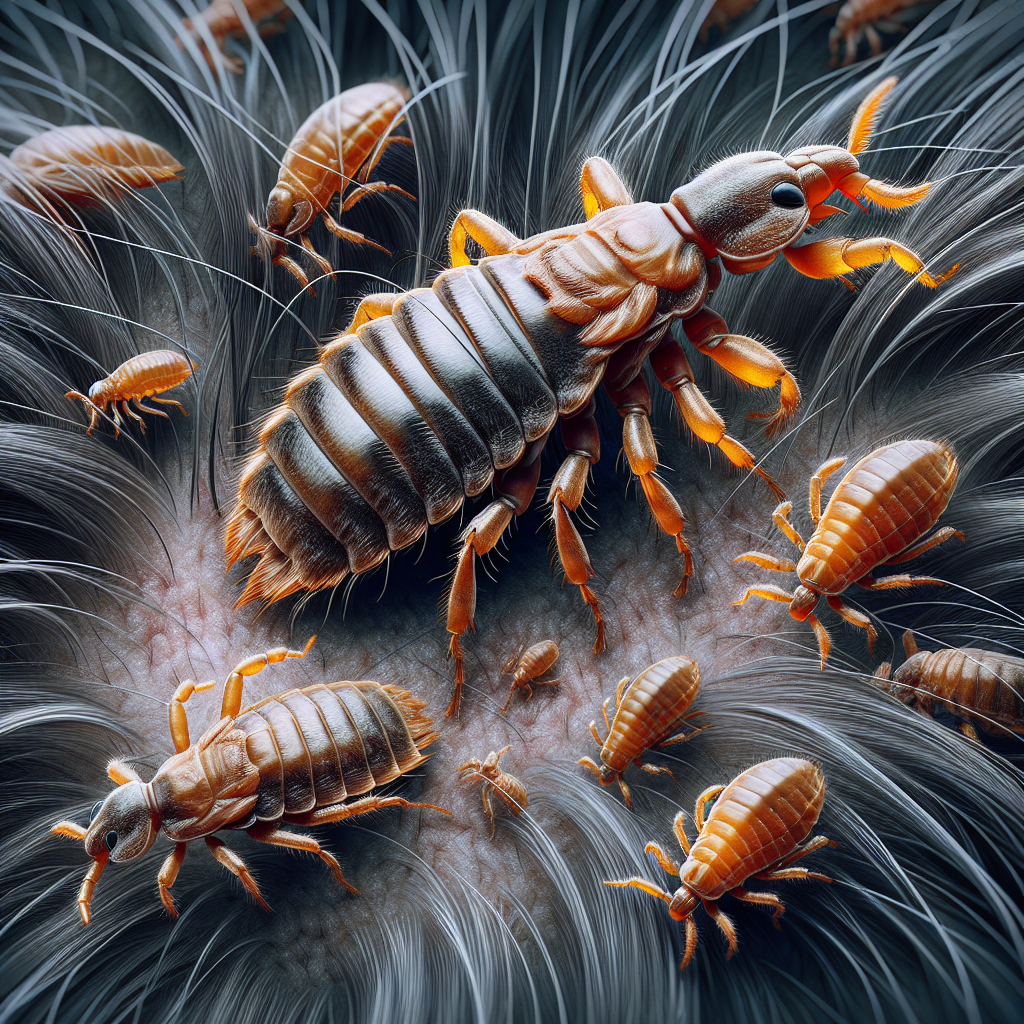Introduction to Flea Prevention

Flea prevention is an essential aspect of pet care that not only safeguards the well-being of your furry companions but also protects your home environment. Fleas, with their ability to reproduce rapidly and cause a multitude of health issues, can be a persistent problem if not addressed properly. Effective flea control can prevent infestations, reduce the risk of disease transmission, and promote a healthier lifestyle for both pets and their owners.
Importance of Flea Prevention
The importance of flea prevention cannot be overstated. Fleas are not just a nuisance; they can cause severe discomfort and health problems for pets. Flea bites lead to itching and scratching, which can result in skin infections and allergic reactions. Furthermore, fleas are known carriers of diseases such as tapeworms and Bartonella, also known as cat scratch fever. Preventing fleas helps maintain your pet’s health and prevents the spread of these diseases to humans.
Common Misconceptions About Fleas
There are several misconceptions about fleas that can hinder effective flea prevention. One common myth is that fleas are only a problem during warm months. In reality, fleas can survive indoors year-round. Another misconception is that indoor pets are not at risk. Fleas can be brought into the home on clothing or by other animals, making even indoor pets susceptible. Understanding these misconceptions is crucial for effective flea management and prevention.
Understanding Fleas
To effectively prevent and control fleas, it is important to understand their biology and behavior. Fleas are small, wingless insects that are external parasites, feeding on the blood of their hosts. They are known for their ability to jump long distances and their rapid reproductive cycle.
Life Cycle of Fleas
The flea life cycle consists of four stages: egg, larva, pupa, and adult. This cycle can last anywhere from two weeks to several months, depending on environmental conditions. Adult fleas lay eggs on the host animal, which then fall off into the environment. These eggs hatch into larvae, which feed on organic debris. The larvae then spin cocoons and develop into pupae. Adult fleas emerge from pupae when they sense a potential host nearby. Understanding this cycle is crucial for effective flea prevention, as each stage may require different treatment strategies.
How Fleas Affect Pets and Homes
Fleas can cause a range of problems for pets and homes. For pets, flea bites can lead to intense itching, allergic dermatitis, hair loss, and even anemia in severe infestations. For homes, fleas can quickly spread, infesting carpets, bedding, and furniture. This can create a cycle of re-infestation that is difficult to break without comprehensive flea prevention measures.
Types of Flea Prevention Products
There is a wide array of flea prevention products available on the market, each with its own benefits and drawbacks. Choosing the right product depends on your pet’s specific needs and lifestyle.
Topical Treatments
Topical treatments are one of the most common flea prevention options. These are applied directly to the pet’s skin, usually between the shoulder blades, and work by killing fleas on contact or through systemic absorption. They are convenient and effective, often providing protection for up to a month. However, some pets may experience skin irritation or allergic reactions.
Flea Collars
Flea collars are another popular choice for flea prevention. These collars release active ingredients that repel or kill fleas and can provide long-lasting protection, sometimes up to eight months. They are easy to use and are a good option for pets that do not tolerate topical treatments. However, they may not be as effective if the pet gets wet frequently.
Oral Medications
Oral medications are gaining popularity for flea prevention due to their convenience and effectiveness. These medications are ingested by the pet and work by killing fleas that bite the animal. They often provide protection for up to three months and are a good option for pets with sensitive skin. However, they require a prescription from a veterinarian.
Natural and Organic Options
For those looking for a more natural approach to flea prevention, there are several organic options available. These can include essential oils, herbal sprays, and diatomaceous earth. While these options may be less harsh than chemical treatments, their effectiveness can vary, and they may need to be used more frequently.
Choosing the Right Flea Prevention for Your Pet
Selecting the appropriate flea prevention method involves considering several factors unique to your pet.
Factors to Consider (Pet Size, Age, Health)
When choosing a flea prevention product, consider your pet’s size, age, and overall health. For instance, some products are not recommended for puppies, kittens, or senior pets due to their more sensitive systems. Additionally, pets with certain health conditions may require specific types of treatments. It is important to read the labels and, if in doubt, consult with a veterinarian.
Vet-Recommended Products
Veterinarians can provide valuable guidance on the best flea prevention products for your pet. They can recommend specific treatments based on the latest research and your pet’s individual needs. Vet-recommended products are often more effective and safer, as they have been tested rigorously.
Application of Flea Prevention Products
Proper application of flea prevention products is essential to ensure their effectiveness and the safety of your pet.
Proper Application Techniques
Each flea prevention product comes with its own instructions for application. It is vital to follow these instructions carefully. For topical treatments, ensure that the product is applied directly to the skin and not just the fur. For oral medications, make sure the full dose is consumed. Incorrect application can reduce the effectiveness of the product and leave your pet vulnerable to fleas.
Frequency of Application
The frequency of application varies depending on the product used. Some treatments require monthly application, while others may last for several months. It is important to adhere to the recommended schedule to maintain consistent protection against fleas. Missing a dose can provide a window for fleas to reinfest your pet and home.
Incorporating a comprehensive flea prevention strategy is crucial for maintaining the health and comfort of your pets and household. By understanding fleas, selecting the right prevention products, and applying them correctly, you can effectively keep fleas at bay and ensure a flea-free environment.
Flea Prevention for Dogs
Fleas can be a persistent problem for dogs, causing discomfort and health issues. Effective flea prevention is crucial to ensure your pet’s well-being.
Specific Products for Dogs
When it comes to flea prevention for dogs, there are several products available that cater specifically to their needs. Topical treatments, such as spot-on liquids, are popular and efficient. These are applied directly to the dog’s skin, usually at the back of the neck, and offer protection against fleas for up to a month. Oral tablets are another option, providing systemic protection by entering the dog’s bloodstream and killing fleas that bite the dog. Collars infused with flea-repelling chemicals can also be used, offering a long-term solution that typically lasts several months. It’s important to select a product that suits your dog’s size, age, and health status, and consult with a veterinarian to determine the best option.
Dog-Specific Application Tips
Applying flea prevention products correctly is essential to their effectiveness. For topical treatments, part the dog’s fur so the liquid is applied directly to the skin, not just the fur. Ensure the product dries completely before allowing the dog to get wet, as water can diminish the product’s efficacy. With oral medications, administer them with food to enhance absorption and reduce the risk of stomach upset. When using flea collars, ensure they fit snugly but comfortably around the dog’s neck, allowing two fingers to fit between the collar and the skin. Regularly check your dog for any signs of irritation or allergic reactions to the products used.
Flea Prevention for Cats
Cats have specific needs when it comes to flea prevention, and using the right products is key to keeping them flea-free.
Specific Products for Cats
Flea prevention products for cats are formulated differently from those for dogs, due to cats’ unique physiology. Spot-on treatments are effective for cats, providing protection for several weeks at a time. Flea combs are a useful tool for physically removing fleas and their eggs from a cat’s fur, especially when used in conjunction with other treatments. Oral flea prevention options are available for cats, although they are less common than topical solutions. Flea collars are also available but should be used with caution, ensuring they are specifically designed for cats to prevent any adverse reactions.
Cat-Specific Application Tips
When applying flea prevention products to cats, it’s important to follow specific guidelines to ensure safety and effectiveness. For spot-on treatments, apply the product at the base of the skull, where the cat cannot lick it off. Monitor the cat for any signs of adverse reactions, such as excessive scratching or lethargy. If using a flea collar, ensure it is not too tight, and regularly check for any signs of discomfort. Cats are sensitive to chemicals, so it’s crucial to use products specifically designed for them and never use dog flea prevention products on cats, as they can be toxic.
Preventing Flea Infestations in the Home
Flea prevention extends beyond pets to include their environment. Keeping your home free from fleas is essential to maintaining a flea-free pet.
Cleaning and Vacuuming Techniques
Regular cleaning is a cornerstone of flea prevention in the home. Vacuum carpets, rugs, and upholstery frequently, as this helps remove flea eggs, larvae, and adult fleas. Pay special attention to areas where pets spend a lot of time, such as beds and sofas. After vacuuming, immediately dispose of the vacuum bag or empty the canister into a sealed plastic bag to prevent fleas from escaping. Washing pet bedding in hot water and drying it on a high heat setting can kill fleas and their eggs. Steam cleaning carpets and upholstery can also be effective in eradicating fleas at all life stages.
Preventing Fleas in Carpets and Bedding
To prevent fleas from taking hold in carpets and bedding, consider using flea-preventive products designed for the home. Diatomaceous earth, a natural powder, can be sprinkled onto carpets and left for a few hours before vacuuming; it dehydrates and kills fleas. Another option is using flea sprays or foggers that contain insect growth regulators (IGRs) to disrupt the flea life cycle. Regularly treat your home with these products to maintain a flea-free environment. Additionally, consider limiting your pet’s access to certain areas of your home, especially bedrooms, to reduce the chances of fleas spreading.
Flea Prevention for Outdoor Areas
The outdoors can be a source of fleas, so taking steps to prevent infestations in your yard is crucial.
Yard Treatments and Landscaping Tips
Maintaining a clean and well-kept yard is an effective form of flea prevention. Regularly mow the lawn and remove debris such as leaves and grass clippings, as fleas thrive in warm, shady, and moist environments. Treat your yard with flea control products, such as granules or sprays that target fleas and other pests. These products often contain insect growth regulators to break the flea life cycle. Additionally, consider landscaping techniques that reduce flea habitats, such as eliminating tall grasses and dense shrubbery where fleas can hide.
Natural Repellents for Outdoor Use
For those seeking natural flea prevention methods, several options can be effective in outdoor areas. Nematodes, microscopic worms that feed on flea larvae, can be introduced to your yard to naturally reduce flea populations. Essential oils, such as cedarwood or lavender, can be diluted and sprayed around the perimeter of your yard to deter fleas. Planting flea-repellent plants, such as mint or rosemary, can also help keep fleas at bay. These natural methods can be used in conjunction with other flea prevention strategies for more comprehensive protection.
Flea Treatment vs. Flea Prevention
Understanding the difference between flea treatment and flea prevention is vital to effectively manage and prevent flea infestations.
Differences in Approach and Products
Flea prevention focuses on stopping infestations before they start, using products that repel or kill fleas before they can reproduce. These include topical treatments, oral medications, and flea collars for pets, as well as preventative measures like regular cleaning and yard maintenance. In contrast, flea treatment addresses active infestations, often requiring more intensive solutions such as flea shampoos, dips, and foggers. Treatment products are typically stronger and designed to kill fleas at all life stages quickly.
When Treatment is Necessary
Despite the best flea prevention efforts, infestations can still occur. Treatment becomes necessary when you notice signs of fleas, such as excessive scratching, flea dirt, or visible fleas on your pet or in your home. In such cases, a combination of treatments may be required to effectively eliminate the infestation. Consult with a veterinarian for the best course of action, which may include prescription medications or professional pest control services for severe infestations. Addressing the problem promptly is crucial to prevent further spread and discomfort for your pet.
Common Challenges in Flea Prevention
Flea prevention is a crucial aspect of pet care, yet it comes with its own set of challenges. These challenges can complicate efforts to keep pets safe from these persistent pests.
Resistance to Treatments
As with many pests, fleas can develop resistance to treatments over time. This resistance can diminish the efficacy of widely-used flea prevention products, making it difficult for pet owners to control infestations. The development of resistance is often due to the overuse or misuse of specific chemicals in flea prevention products, leading fleas to evolve and adapt. It’s essential for pet owners to stay informed about the latest developments in flea control products and to rotate different types of treatments to reduce the risk of resistance.
Environmental Factors
Environmental factors play a significant role in the success or failure of flea prevention strategies. Factors such as humidity, temperature, and the presence of wildlife can influence flea populations. Warm, humid climates are particularly conducive to flea reproduction, leading to more significant challenges in flea prevention. Additionally, urban areas with dense populations of stray animals and wildlife can serve as reservoirs for fleas, making it more challenging for pet owners to protect their pets. Understanding these environmental influences can help in devising more effective flea prevention strategies tailored to specific conditions.
Seasonal Considerations for Flea Prevention
Flea control is not a one-size-fits-all approach and requires adjustments based on the time of year and geographical location.
Peak Flea Season
Flea activity typically peaks during certain times of the year, depending on the climate. In many regions, flea season coincides with warmer weather, usually from late spring to early fall. During this time, pet owners need to be especially vigilant with their flea prevention measures. Increasing the frequency of treatments and conducting regular checks can help manage flea populations more effectively during peak season.
Adjusting Prevention Strategies for Different Climates
Different climates require customized flea prevention strategies. In temperate regions, seasonal adjustments in flea control methods are necessary, while in tropical climates, where fleas are active year-round, consistent prevention is crucial. For colder areas, flea prevention efforts might be less intensive during the winter months but should be ramped up as temperatures rise. Tailoring flea prevention approaches to the specific climate ensures that pets remain protected throughout the year.
Integrating Flea Prevention with Tick Prevention
Combining flea and tick prevention efforts can provide a more comprehensive approach to pest control, as these parasites often coexist and pose similar threats to pets.
Products That Address Both Fleas and Ticks
There are numerous products available that target both fleas and ticks, simplifying the pest control process for pet owners. These combination treatments often include a blend of insecticides and acaricides, designed to eliminate and prevent infestations of both pests. Pet owners should consult with veterinarians to choose the most suitable product for their pets, considering factors such as the pet’s age, health status, and lifestyle.
Comprehensive Pest Control Strategies
A comprehensive pest control strategy involves more than just topical or oral treatments. It includes environmental management, such as regular cleaning of pet bedding, vacuuming carpets, and maintaining outdoor areas to reduce habitats conducive to fleas and ticks. By integrating multiple methods of flea prevention, pet owners can create a robust defense against these parasites, ensuring the health and comfort of their pets.
Safety and Side Effects of Flea Prevention Products
While flea prevention is essential, it’s equally important to consider the safety and potential side effects of these products on pets.
Potential Side Effects in Pets
Flea prevention products, like any medication, can cause side effects in pets. These can range from mild skin irritations to more severe allergic reactions. It’s crucial for pet owners to monitor their pets for any signs of adverse reactions, such as excessive scratching, vomiting, or changes in behavior, following the application of a flea prevention product. In such cases, consulting a veterinarian promptly is advised to ensure the well-being of the pet.
Safe Usage Tips for Pet Owners
To minimize the risk of side effects, pet owners should adhere strictly to the instructions provided with flea prevention products. Using the correct dosage based on the pet’s weight and species is vital, as is avoiding the use of dog-specific products on cats and vice versa. Additionally, regular discussions with veterinarians can help pet owners make informed decisions about the safest and most effective flea prevention options for their pets.
Future Trends in Flea Prevention
The field of flea prevention is continually evolving, with advancements in technology and new products emerging to meet the challenges of controlling these pests.
Advances in Flea Control Technology
Recent advances in flea control technology have led to the development of more effective and targeted products. Innovations such as isoxazoline-based treatments offer new modes of action that can overcome resistance issues faced by older products. Additionally, advancements in delivery systems, such as long-lasting collars and monthly oral medications, provide pet owners with more convenient and effective flea prevention options.
Emerging Products and Solutions
The future of flea prevention is promising, with ongoing research aimed at discovering novel compounds and solutions. Emerging products focus not only on eliminating adult fleas but also on disrupting their life cycle to prevent future infestations. Moreover, natural and environmentally friendly flea prevention solutions are gaining popularity among pet owners seeking to minimize chemical exposure for their pets and households. As the market for flea prevention continues to grow, pet owners can expect a wider array of options tailored to their specific needs and preferences.
Quick Takeaways:
Flea prevention is essential for maintaining the health and comfort of your pets and home. Understanding the best flea prevention strategies tailored to your pet’s specific needs can make a significant difference. For small dogs, selecting the best flea prevention involves considering both the efficacy and safety of products. Puppies, due to their delicate nature, require safe flea prevention options, often necessitating consultation with a veterinarian to avoid harmful side effects.
For cats, especially those that live indoors, flea prevention is still crucial. Applying flea prevention for cats involves choosing products that cats can tolerate, as they can be sensitive to certain chemicals. Indoor cats might seem less vulnerable, but fleas can easily enter the home on clothing or other pets.
Natural flea prevention methods are gaining popularity among pet owners who prefer eco-friendly solutions. These methods often incorporate essential oils and herbal remedies, which can be applied to both pets and their environments. However, it’s essential to ensure these methods are safe, as some natural substances can be toxic to pets.
Year-round flea prevention strategies are recommended even in colder climates, as fleas can survive indoors. Effective flea prevention for homes includes regular cleaning, vacuuming carpets, and using flea prevention products in living areas. For homes with multiple pets, coordinating flea prevention efforts is crucial to avoid reinfestation.
Finally, comparing flea prevention products can help identify the top-rated options that suit your pet’s needs and your lifestyle. It’s important to consider both the effectiveness and any potential side effects to ensure the health and safety of your pets.
FAQs:
1.
What is the best flea prevention for small dogs?
The best flea prevention for small dogs depends on their specific needs and health conditions. Top-rated products include topical treatments, oral medications, and flea collars that are designed for smaller breeds. It’s crucial to choose products that are specifically formulated for small dogs to prevent overdosing and potential side effects. Consulting with a veterinarian can help determine the most suitable option for your pet.
2.
How can I apply flea prevention for cats safely?
Applying flea prevention for cats involves following the product instructions carefully. Most topical treatments should be applied to the skin at the base of the cat’s neck where they cannot lick it off. It’s important to choose products specifically designed for cats, as some dog flea prevention products can be toxic to them. Regular grooming and inspection for fleas can also help in managing flea infestations effectively.
3.
Are there natural flea prevention methods for pets?
Yes, there are several natural flea prevention methods for pets. These include using essential oils like lavender or cedarwood, which are known to repel fleas. However, these should be used with caution, as some oils can be harmful to pets. Regular bathing with natural flea-repellent shampoos and maintaining a clean environment also contribute to effective flea control. Always consult with a veterinarian before starting any natural treatment to ensure it’s safe for your pet.
4.
What are some effective flea prevention tips for pet owners with multiple pets?
For pet owners with multiple pets, it’s essential to treat all animals simultaneously to prevent fleas from hopping from one pet to another. Consistent cleaning of the home, including carpets and pet bedding, is vital. Year-round flea prevention products should be used on all pets, and products should be rotated periodically to reduce the risk of resistance. Regular vet check-ups can help monitor the effectiveness of the prevention plan.
5.
How can I prevent fleas in carpets and my home environment?
Preventing fleas in carpets and the home involves a multi-faceted approach. Regular vacuuming is crucial, as it removes adult fleas and their eggs. Using flea sprays or powders specifically designed for home use can help treat carpets and furniture. Washing pet bedding and other fabrics in hot water will also kill fleas and their larvae. For an eco-friendly flea prevention solution, diatomaceous earth can be sprinkled on carpets and vacuumed up after a few hours. Regularly treating your pets with flea prevention products will further reduce the likelihood of a home infestation.
Conclusion:
Flea prevention is a critical component of responsible pet ownership, as it safeguards both your pets and your home environment. With a wide range of flea prevention products available, it’s important to select the right one based on your pet’s size, age, and health condition. Small dogs, puppies, and indoor cats each have unique needs that should be addressed with appropriate prevention strategies. Natural and eco-friendly options are viable for those seeking alternative methods, but they require careful consideration to ensure safety and effectiveness.
Year-round flea prevention remains crucial, as fleas can thrive indoors regardless of the season. Coordinating efforts in homes with multiple pets and maintaining a clean living space are essential for comprehensive flea control. By comparing products and staying informed about the latest prevention techniques, pet owners can create a tailored approach that keeps their pets healthy and happy, free from the discomfort and health risks posed by fleas.
References:
1. [CDC – Flea Prevention](https://www.cdc.gov/fleas/prevention/index.html)
2. [VCA Hospitals – Flea and Tick Prevention](https://vcahospitals.com/know-your-pet/flea-and-tick-prevention)
3. [EPA – Controlling Fleas and Ticks Around Your Home](https://www.epa.gov/pets/controlling-fleas-and-ticks-around-your-home)
4. [Cornell University – Flea and Tick Prevention](https://www.vet.cornell.edu/departments-centers-and-institutes/riney-canine-health-center/canine-health-information/flea-and-tick-prevention)
5. [PetMD – Flea and Tick Prevention and Treatment for Dogs](https://www.petmd.com/dog/general-health/flea-and-tick-prevention-and-treatment-dogs)
Our solution eradicates fleas on contact without harmful chemicals, ensuring a safe environment for your pets and family. Easy to use and highly effective, SayByeBugs helps you maintain a flea-free home. Learn more and order today at SayByeBugs.com


